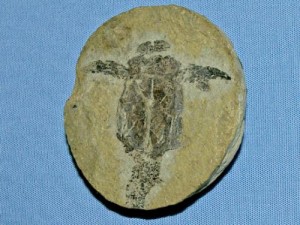Cromarty today is a quiet little town on the Black Isle, North-east Scotland. At the dawn of the nineteenth century, however, it was an important fishing centre, and an important trade supplying the needs of visiting shipping sheltering in the firth nearby, brought relative prosperity.
Born on 10 October 1802, as a boy, Hugh loved the rocky shores and wooded hills of the Black Isle, which he explored, sometimes alone or with friends, sometimes with his uncles, who taught him to appreciate the teeming wildlife of sea, shore and countryside. At nightfall, by the glow of a cottage fire, he was entranced by the tales the old folk could tell, as they passed the long winter evenings.
the teeming wildlife of sea, shore and countryside. At nightfall, by the glow of a cottage fire, he was entranced by the tales the old folk could tell, as they passed the long winter evenings.
His father having died at sea when he was five, he developed a certain self-reliance, and so, despite his uncle’s offer to fund a college place, at seventeen he decided to become a stonemason. He knew the trade was hard, but also that the slack winter months would allow him to study natural history and literature, his true vocation. For the next fifteen years, he travelled all over the north of Scotland, quarrying, stone-cutting and building. During this time, as he laboured, he made many of the geological observations familiar in his writings. The Old Red Sandstone, until then little known to fossil collectors or geologists, became his particular interest.
He observed in the solid rock, ripple marks as perfect as those he saw on the sandy shores of the Cromarty Firth, and later, shining black scales and spines of fish, so that in his imagination he pictured the ancient seas where the rocks were formed.
As he travelled, during his apprenticeship and time as a journeyman mason, he collected the folk-lore, customs and legends of the people he stayed with, and the habits of his fellow craftsmen. These, the common people, were ever the ones he wanted to educate and inform by his writings, whether on myths and legends, history, and geology of Scotland, and later his studies of Christianity.
The hard life and ill conditions of a journeyman mason undermined his health, and he spent increasing time at home, and wrote poetry, and articles for the local press. His first published work was entitled: Poems of a Journeyman Mason (1829). Wishing to marry Lydia Fraser, at the age of 32, he took up a position as accountant in a bank. As often happens, her parents opposed the match. Continuing his writing, he published Scenes and Legends of the North of Scotland. “It has, or ought to have, a place as a unique historical document, and an independent contribution to the science of antiquity” (Dr W Mackenzie). He married Lydia in 1837.
Increasingly, as a man of strong religious conviction, he became aware of the many injustices that bound the people to tradition. The first of many issues he was to address concerned the law of patronage. During the last parliament of Queen Anne, in 1711, church congregations had lost their right to choose their minister, and instead, these depended upon the patronage of the great landowners. The Evangelical Party (of the Church of Scotland) saw a scriptural warrant for a congregation to choose its own minister. Miller wrote a brilliant pamphlet opposing patronage, which was subsequently printed and widely distributed. As a consequence, in 1840 Miller was invited to come to Edinburgh to serve as editor of the Evangelical Party’s newspaper, The Witness. For the remaining sixteen years of his life, Hugh Miller was at the centre of religious argument, and from 1843, with the Disruption of the Church of Scotland, he expressed the views of the Free Church. Becoming a well-known figure in Edinburgh society, “he stood out from the crowd, he was of good height and broad shoulders, often dressed in a suit of rough tweed, with a shepherds plaid across his chest, wearing a soft felt hat and carrying a stout stick, such that a stranger might pause and wonder what sort of man was he, more a mountaineer than native city dweller”.
It was at this time that he published The Old Red Sandstone His geological books always appealed to a wider public than geologists alone. The interest lay in the implications for current thinking, not least, religion. This was just prior to Darwin’s Origin of Species (1859). Thomas Huxley later gave this endorsement of Millers methods: “The more I study the fishes of the Old Red Sandstone, the more I am struck by the patience and sagacity manifested in Hugh Miller’s researches, and by the natural insight which in his case seems to have supplied the place of special anatomical knowledge.”
thinking, not least, religion. This was just prior to Darwin’s Origin of Species (1859). Thomas Huxley later gave this endorsement of Millers methods: “The more I study the fishes of the Old Red Sandstone, the more I am struck by the patience and sagacity manifested in Hugh Miller’s researches, and by the natural insight which in his case seems to have supplied the place of special anatomical knowledge.”
In 1844 Robert Chambers anonymously published Vestiges of the Natural History of Creation in which he argued that life had evolved through transmutation of species. He produced little evidence for the theory, yet it appalled Miller, who became Chambers’ most distinguished opponent. He counter argued that the fossil fishes he had observed and catalogued disproved any theory of gradual evolution. In Testimony of the Rocks, published after his death, he stated of Genesis: “I know not a single truth that militates against the minutest or least prominent of its details..” Footprints of the Creator was a direct refutation of Chambers’ Vestiges, which Darwin acknowledged as a major influence on his theory.
Miller, as a religious man, was greatly concerned with reconciling faith and science. He became the focus of violent criticism from both scientists and the more reactionary, bigoted members of his own church. The Testimony of the Rocks (1859) grapples with this difficulty in such a way, that it favourably formed public opinion for a reasoned approach to the natural sciences. Thus although it might be assumed he laboured to defend religion against science, in reality, he spent much of his energies defending science from church dogmatism. Miller laid into the precursors of modern so-called creationists with gusto and this debt, is acknowledged by Archibald Geikie: “His genial ardour and irresistible eloquence swept away the last remnants of the barrier of orthodox prejudice against geology.”
Probably his most readable book today though, would be his autobiography, My Schools And Schoolmasters, first appearing in 1852. This gives an insight into the vanished world of northern Scotland in the early nineteenth century. In his own lifetime, the customs, traditions and beliefs of the people were changing rapidly.
It has been said that hardly anyone today opens Miller’s ‘unreadable Victorian tomes’, but the truth is that even Miller’s geological works have remained more profitably and constantly in print than that of almost any of his scientific peers, including Robert Chambers or Thomas Huxley. Miller’s science and theology, unlike that of his critics, was invested with the firm conviction that poverty and destitution were social evils rather than pre-ordained, or divinely sanctioned. Indeed this is an overlooked subtext of evolutionary debates in the nineteenth century. From the very beginning, church dogmatism led to the formulation of evolutionary doctrine.
Miller could be argumentative, provocative and downright infuriating. But, although not always right, Miller was a diligent and perceptive commentator on society and had a rigorous regard for the truth.
The importance of Miller’s work, along with other Victorian social commentators, is not whether they are held to be strictly “true” in some conceited modern sense. Rather, it is the extent to which they can be seen as a conceptual staging post in the wider development of ideas. To claim that Miller was ‘wrong’ is tragically small-minded. It was a shock indeed though, to all Edinburgh to hear that illness, criticism and overwork had strained him in later years, leading to him taking his own life, on 24 December 1856.
